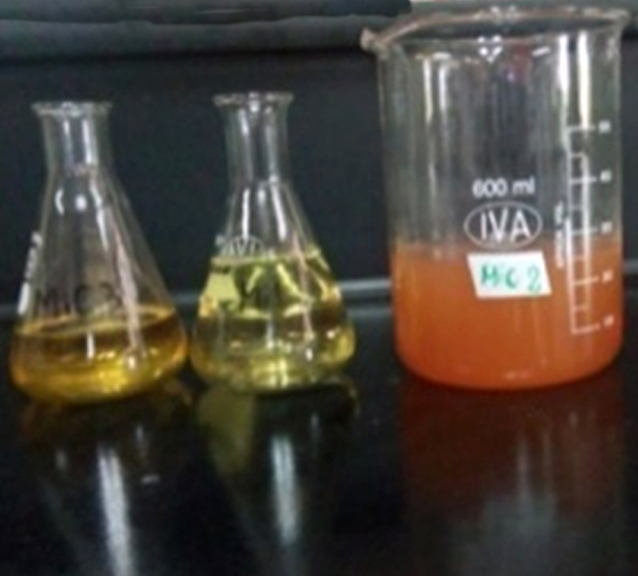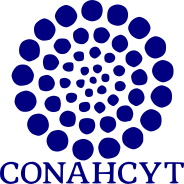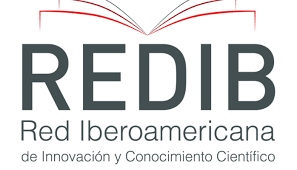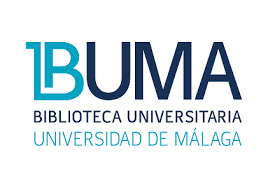Efecto antifúngico de concentrados etanólicos de plantas medicinales de la Sierra Norte de Puebla contra Rhizoctonia solani y Phytophthora capsici
DOI:
https://doi.org/10.18387/polibotanica.59.16Palavras-chave:
fitoquímico, biocontrol, biofumigante, concentradosResumo
Phytophthora capsici y Rhizoctonia solani son patógenos de relevancia agronómica debido a su versatilidad de causar daños en diferentes etapas del ciclo productivo de las plantas. Por lo que se ha motivado a la búsqueda de alternativas sostenibles para su manejo. El objetivo del presente trabajo se basó en el uso de plantas medicinales de la Sierra Norte de Puebla, como agentes de biocontrol de estas dos enfermedades. Se prepararon concentrados etanólicos y se realizó un tamiz fitoquímico parcial para determinar la presencia de metabolitos de interés, posteriormente se determinó el porcentaje de inhibición de crecimiento micelial (% ICP) mediante la prueba de medio envenenado utilizando una concentración de 10 000 ppm teniendo como control los medios con etanol para descartar el efecto inhibitorio del solvente. Para ambos patógenos el mayor % ICP fue el de Bocconia frutescens con un 82 % para P. capsici y un 53 % para R. solani en ambos casos el concentrado con menor %ICP lo presentó Cyathea divergens. Por lo que el estudio mostró la efectividad antifúngica estadísticamente representativa (p ≤ 0.05) de las plantas estudiadas de la Sierra Norte de Puebla, sugiriendo su uso para futuras investigaciones.
Referências
Alfaro, M. A. M., Oliva, V. E., Cruz, M. M., García, G., Olazcoaga, G. T., & León, A. W. (1995). Catálogo de plantas útiles de la Sierra Norte de Puebla, México. https://api.semanticscholar.org/CorpusID:140594750
Arce-Araya, C., Varela-Benavides, I., & Torres-Portuguez, S. (2019). Inhibición del crecimiento micelial de hongos asociados a antracnosis en ñame (Dioscorea alata). Agronomía Mesoamericana, 381–393. https://doi.org/10.15517/am.v30i2.32653
Castresan, J. E., Rosenbaun, J., & González, L. A. (2013). Estudio de la efectividad de tres aceites esenciales para el control de áfidos en pimiento, Capsicum annuum L. IDESIA (Arica), 31(3), 49–58.
Chaparro-Hernández, I., Rodríguez-Ramírez, J., Barriada-Bernal, L. G., & Méndez-Lagunas, L. (2022). Tree ferns (Cyatheaceae) as a source of phenolic compounds – A review. Journal of Herbal Medicine, 35, 100587. https://doi.org/10.1016/j.hermed.2022.100587
Corro-Contreras, R., Cuevas-Sanchez, J. A., Guerra-Ramirez, D., & Serrato-Cruz, M. A. (2022). MANEJO Y USO DE Cnidoscolus spp. EN EL TOTONACAPAN, PUEBLA Y MIXTECA BAJA, OAXACA. Agricultura sociedad y desarrollo, 1–20. https://doi.org/10.22231/asyd.v19i3.1388
de Oliveira-Júnior, R. G., Ferraz, C. A. A., de Oliveira, A. P., Araújo, C. S., Oliveira, L. F. da S., Picot, L., Rolim, L. A., Rolim-Neto, P. J., & Almeida, J. R. G. da S. (2018). Phytochemical and pharmacological aspects of Cnidoscolus Pohl species: A systematic review. Phytomedicine, 50, 137–147. https://doi.org/10.1016/j.phymed.2017.08.017
Espinoza-Ahumada, C. A., Gallegos-Morales, G., Ochoa-Fuente, Y., Hernandez-Castillo, F. D., Méndez-Aguilar, R., & Rodriguez-Guerra, R. (2019). Antagonistas microbianos para biocontrol de la marchitez y su efecto promotor en el rendimiento de chile serrano. Revista Mexicana de ciencias agrícolas, Especial(23), 187–197.
Faizal, A., Taufik, I., Firda Rachmani, A., & Priharrtini Azar, A. W. (2020). Antioxidant and antibacterial properties of tree fern Cyathea contaminans. Biodiversitas, 21(5), 2201–2205. https://doi.org/10.13057/biodiv/d210548
Fernández-Herrera, E., Acosta-Ramos, Ma., Ponce-Gonzalez, F., & Manuel-Pinto, V. (2007). Manejo Biológico de Phytophthora capsici Leo., Fusarium Oxysporum Schlechtend.: Fr. Y Rhizoctonia Solani Kühn en jitomate (Lycopersicon esculentum Mill.). Rev. mex fitopatol, 25(1), 35–42.
González-Guerrero, M. (2021). Manual de plantas medicinales del Estado de Puebla para tratar afecciones respiratorias. (1° Ed). CONCYTEP. https://concytep.gob.mx/?r3d=manual-de-plantas-medicinales-del-estado-de-puebla-para-tratar-afecciones-respiratorias
Guzman, S. (2019). Los alcaloides de Bocconia frutescens L. y su actividad contra hongos fitopatógenos.
Joaquín-Ramos, A. D. J., López-Palestina, C. U., Pinedo-Espinoza, J. M., Altamirano-Romo, S. E., Santiago-Saenz, Y. O., Aguirre-Mancilla, C. L., & Gutiérrez-Tlahque, J. (2020). Phenolic compounds, antioxidant properties and antifungal activity of jarilla (Barkleyanthus salicifolius [Kunth] H. Rob & Brettell). Chilean Journal of Agricultural Research, 80(3), 352–360. https://doi.org/10.4067/S0718-58392020000300352
Koenning, S. R., & Wrather, J. A. (2010). Suppression of Soybean Yield Potential in the Continental United States by Plant Diseases from 2006 to 2009. Plant Health Progress, 11(1), 5. https://doi.org/10.1094/PHP-2010-1122-01-RS
López Rivera, C., & Aguillón Osma, J. (2015). EVALUACIÓN IN-VITRO DE LA ACTIVIDAD ANTIFÚNGICA DEL EXTRACTO DE Bocconia frutescens L. FRENTE AL HONGO Trichophyton mentagrophytes. Rev. Asoc. Col Cienc, 27, 96–104.
Martínez, M., Evangelista Oliva, V., Basurto, F., Cruz, M., & Cruz-Rivas, A. (2007). Flora útil de los cafetales en la Sierra Norte de Puebla, México Useful plants of the Sierra Norte de Puebla, Mexico. Revista Mexicana de Biodiversidad, 78.
Moreno Paredes, M., Ramírez-Cando, L., & Cedeño Luzardo, E. (2021). Evaluación del efecto antagónico de una biopelícula con extractos de Samanea saman frente a Colletotrichum gloeosporioides responsable de la antracnosis en mango. Bionatura, 6(1), 1466–1472.
Nath, K., Talukdar, A. D., Bhattacharya, M. K., Bhowmik, D., Chetri, S., Choudhury, D., Mitra, A., & Choudhury, N. A. (2019). Cyathea gigantea (Cyatheaceae) as an antimicrobial agent against multidrug resistant organisms. BMC Complementary and Alternative Medicine, 19(1), 279. https://doi.org/10.1186/s12906-019-2696-0
Pacheco-Hernández, Y., Villa-Ruano, N., Rubio-Rosas, E., & Vásquez-Lara, I. (2020). Chemical profiling of the urticating trichomes from Cnidoscolus multilobus (“mala mujer”) and their antimicrobial activity. Polibotánica, 0(50). https://doi.org/10.18387/polibotanica.50.10
Porsche, F. M., Molitor, D., Beyer, M., Charton, S., André, C., & Kollar, A. (2018). Antifungal Activity of Saponins from the Fruit Pericarp of Sapindus mukorossi against Venturia inaequalis and Botrytis cinerea. Plant Disease, 102, 991–1000. https://doi.org/10.1094/PDIS-06-17-0906-RE
Rodriguez A., O. E. (2015). Actividad antioxidante de extractos de hojas de Bocconia frutescens L. (Papaveraceae). Revista de Tecnología ¦ Journal of Technology ¦ Págs. 21-36, 14, 21–36. https://doi.org/10.18270/rt.v14i2.1868
Rodríguez Landa, J. F., Hernández Lozano, M., & Méndez Ventura, L. M. (2020). Manual de prácticas de farmacognosia [Manual]. https://www.uv.mx/qfb/files/2020/09/Guia-de-Farmacognosia.pdf
Yu, X., Gao, X., Zhu, Z., Cao, Y., Zhang, Q., Tu, P., & Chai, X. (2014). Alkaloids from the Tribe Bocconieae (Papaveraceae): A Chemical and Biological Review. Molecules, 19(9), 13042–13060. https://doi.org/10.3390/molecules190913042

Downloads
Publicado
Edição
Seção
Licença

Polibotánica por Departamento de Botánica de la Escuela Nacional de Ciencias Biológicas del Instituto Politécnico Nacional se distribuye bajo una Licencia Creative Commons Atribución-NoComercial-CompartirIgual 4.0 Internacional.



















